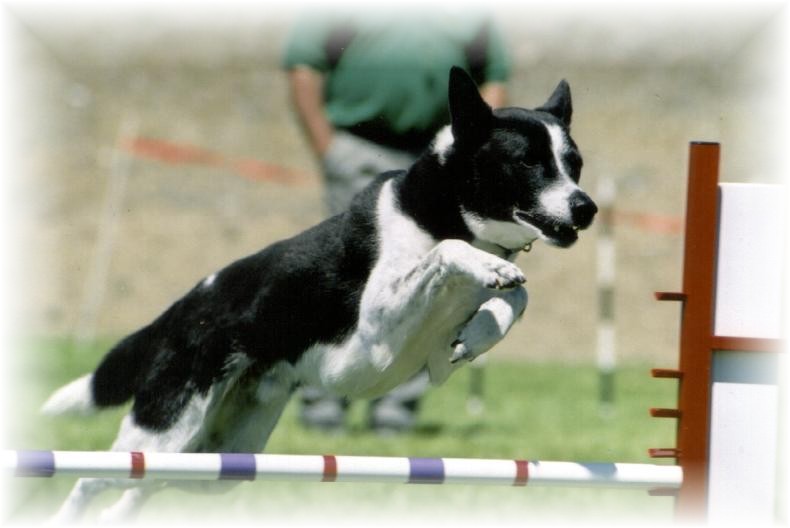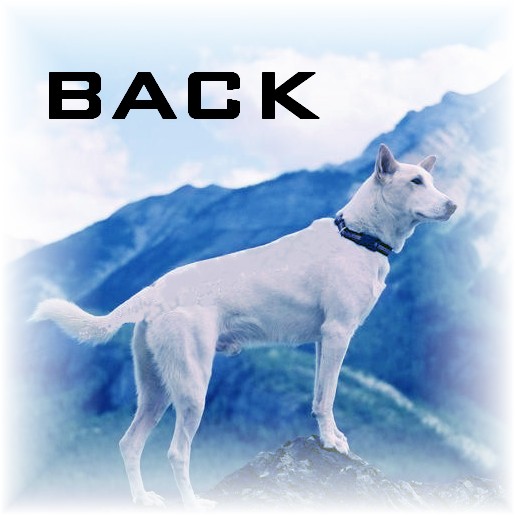| Spring 2007 Newsletter |
| Agility
Getting Started � Advice from the Pros and their Pariah Athletes By CCO Contributing Editors: Michelle Harrington, and Larry Myers |
 |

|
| This article is based on interviews with Alan Gersman, Jennie Larkin, and Sally Armstrong-Barnhardt The Origin of the Sport The sport was first demonstrated in England in 1978 as entertainment to fill time between events at the Crufts International Dog Show. It was modeled on equestrian grand prix jumping and became an over-night success with the spectators. The English Kennel Club awarded official status to the sport in 1980, and by 1986 it had spread to the United States. Agility made an impact in the Great White North, when Art Newman, of North Gower, Ontario, founded the Agility Dog Association of Canada (now called the Agility Association of Canada - AAC) in 1988. It quickly spread to many of the provinces and territories. Today there are over 100 officially recognized clubs and hundreds of unofficial clubs thriving throughout Canada. The Fundamentals of Agility Dog agility is an exciting fast-paced sport that focuses on the �team� relationship of dog and handler who negotiate a course of obstacles. The dog is given direction from the handler with voice, body, and hand signals to navigate the course. The obstacles comprise of tunnels, jumps, weaves, and various contact obstacles, such as the A-frame and teeter. Emphasis is on speed and accuracy � completing the course as quickly as possible while not knocking over jumps, missing weave poles, going off course, or missing a contact. Sound like something to explore? Read on! So what�s The Attraction? Alan Gersman of Virginia has been training his Canaan Dogs in agility for a decade. His first Canaan, Isabel, started training at the age of five. She was a natural game player and a willing companion in training. She readily took direction and enjoyed being with Alan and learning the elements of agility. Within three years they were competing at the AKC Invitational trials. Jennie Larkin, also of Virginia, turned an unrequited desire to do horse jumping into developing a top agility dog. She too found great enjoyment in developing a strong bond with Tycho through training in obedience and agility. The consensus appears to be that, even though they both have been successful in agility trials, the benefits come from learning more about their Canaan pals. Getting started An agility course is a confusing mass of obstacles that has to be navigated quickly. Communication between handler and dog has to be clear and precise. And the dog must be willing to take commands, especially at a distance. Thus, a good grounding in obedience is a necessity in order to string a sequence of obstacles together. Both Alan and Jennie had trained their dogs in obedience before training in agility. The advantages to their dogs were twofold. First, they were trained with the commands that would be required in agility and beyond. And second, they had been involved in settings that required the dog to concentrate on their handler. This is an important trait for any performance event. Because agility is done so quickly, the dog must be looking to the handler all the time in order to properly navigate the course. 1 2 |
 |
| Max's Lada L. P. Tiger Pooh "Lada" MACH owned by Alan Gersman |
 |
| Year Fuligin Ged Tycho, CDCA-V, CDCA-HC, CGC, CDX, RA, AX, AXJ, NAP, NJP, CDCA-Dog of the Year 2001 owned by Jennie Larkin |
